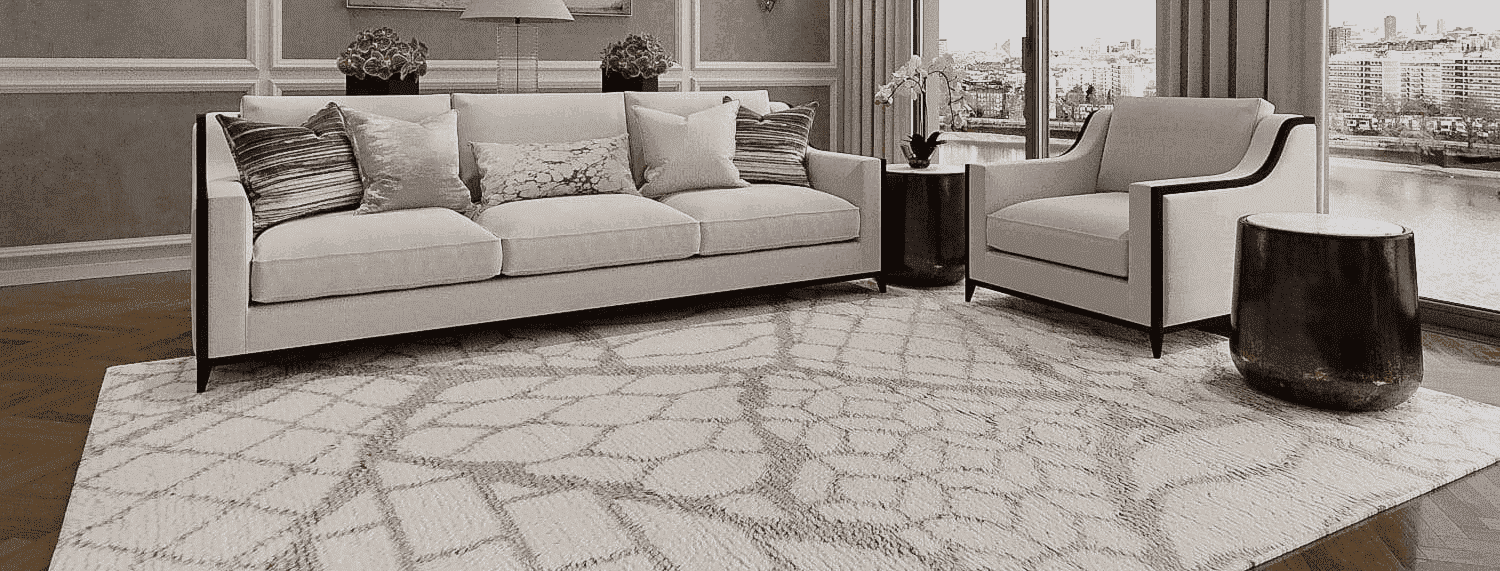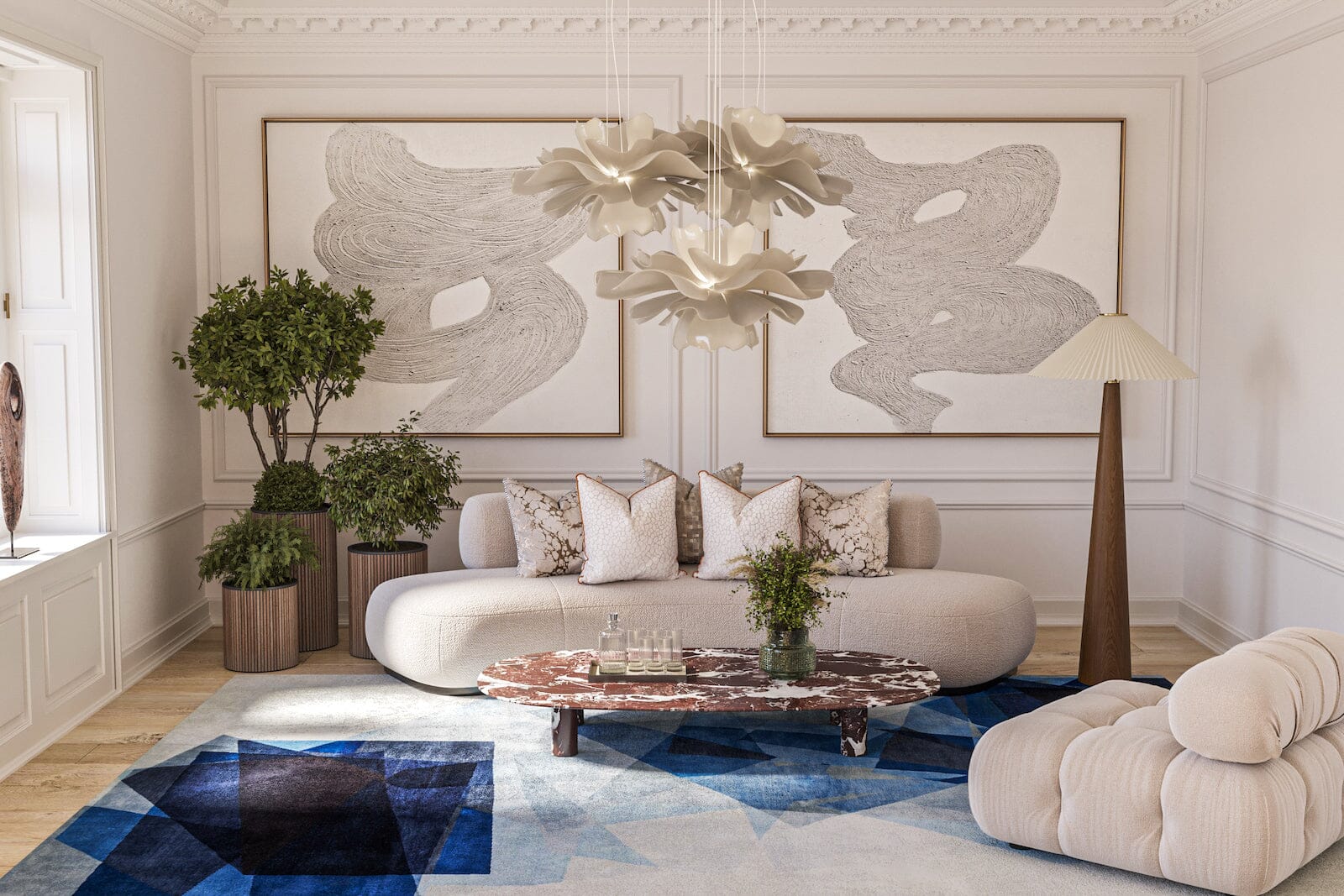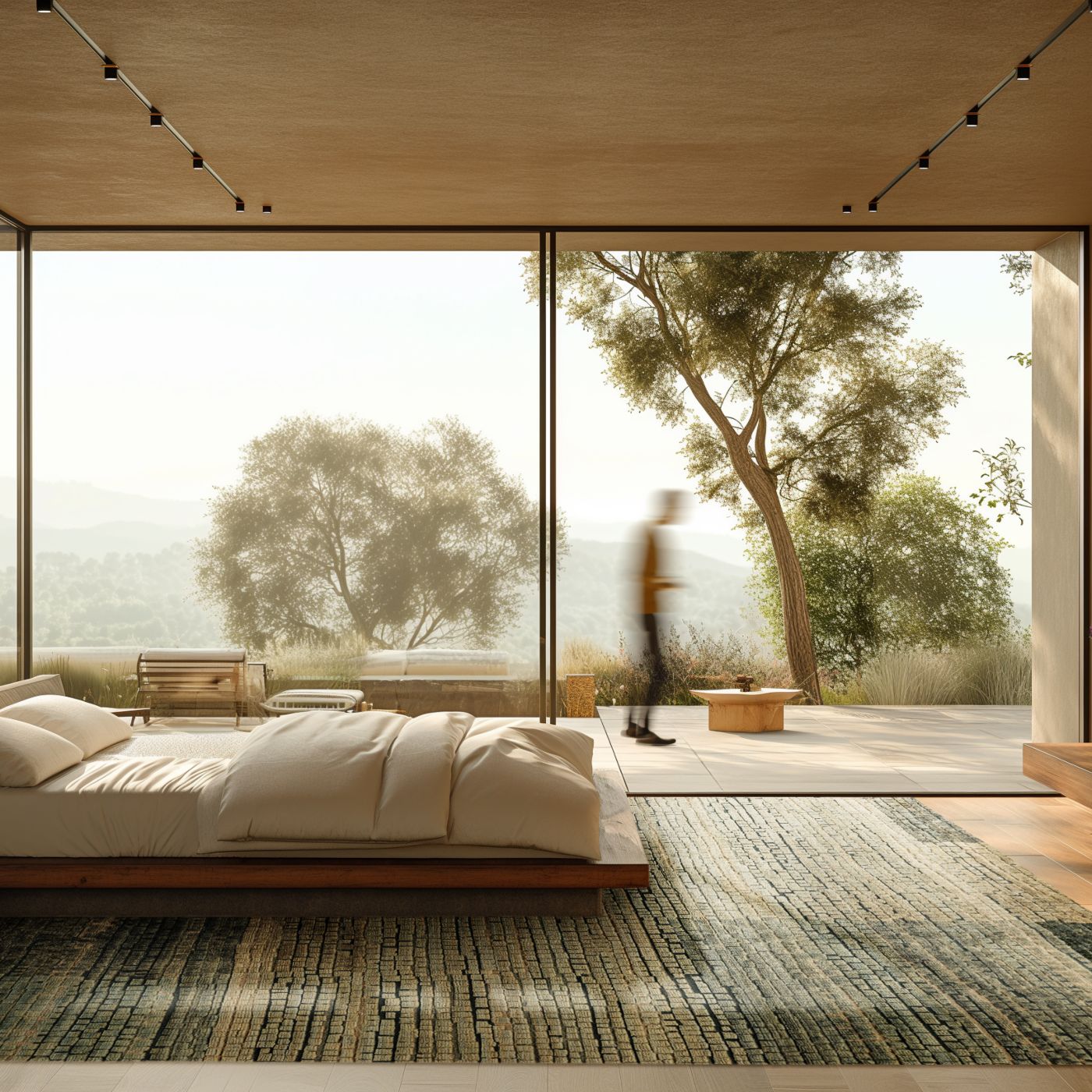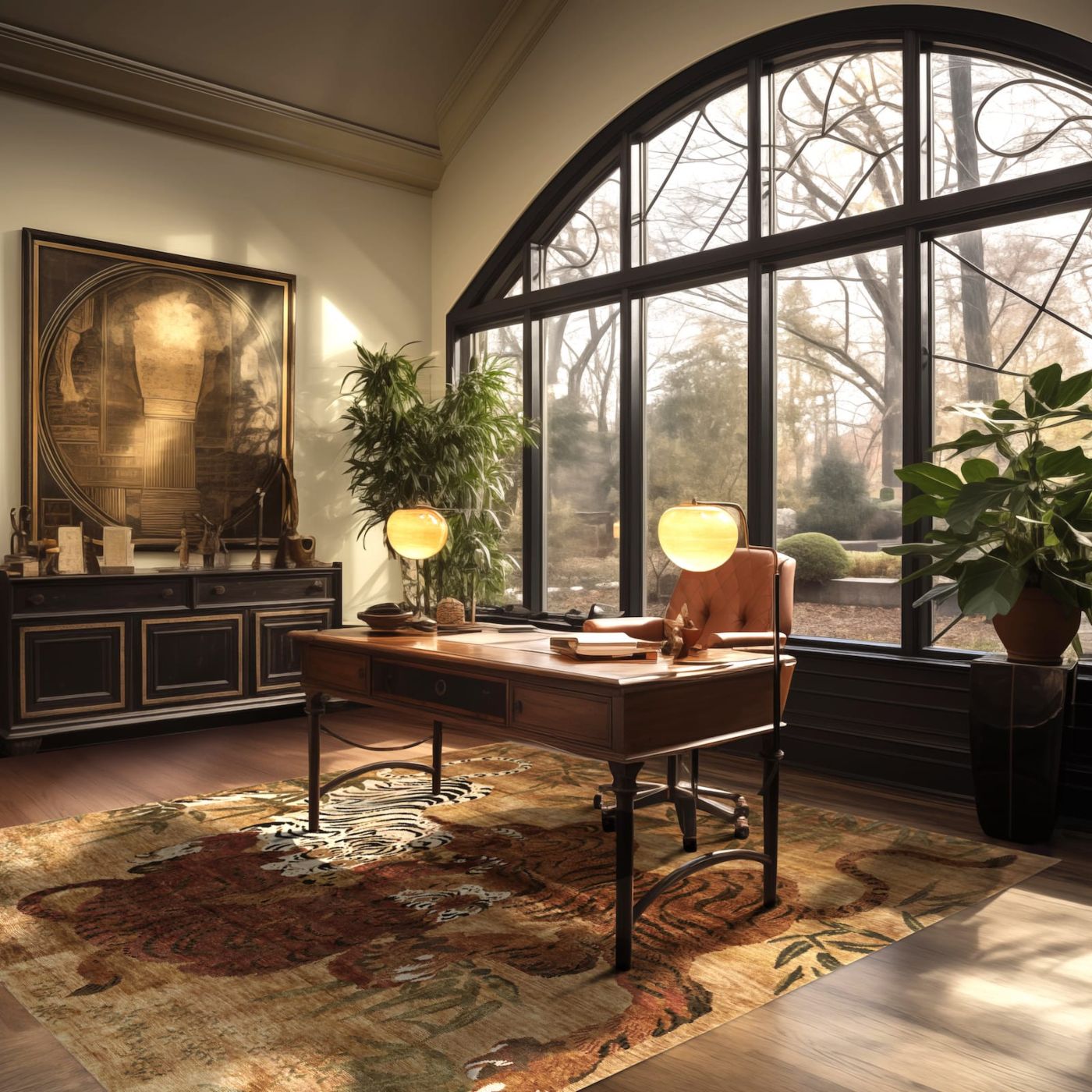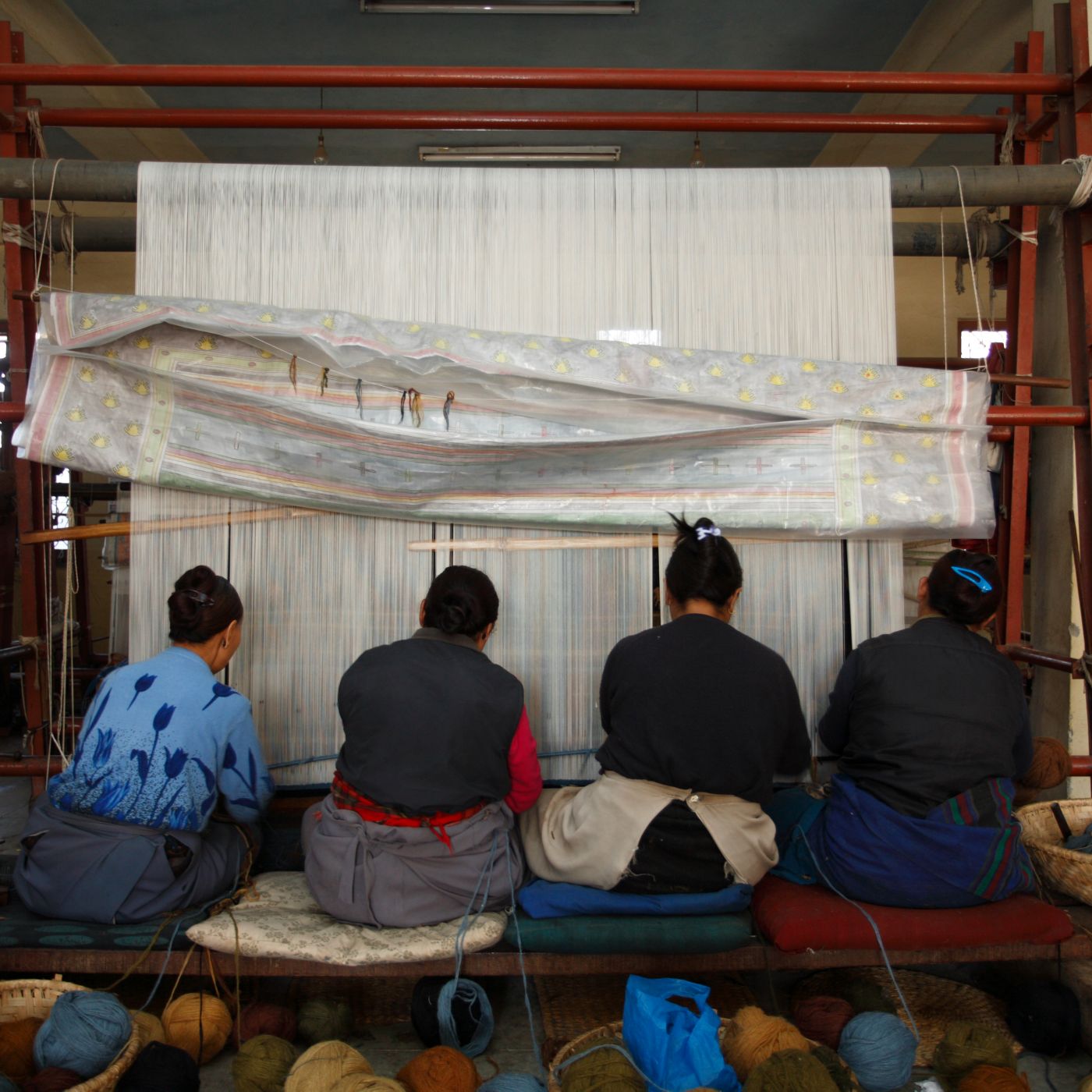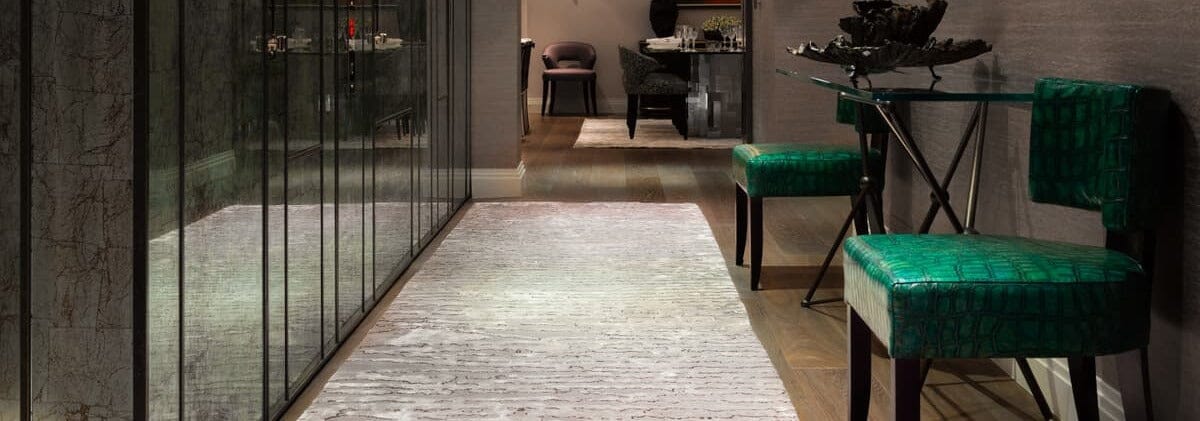
How to Choose a Luxury Runner Rug for Your Home

A runner rug can beautifully define the rooms and corridors of your home. With diverse styles and premium materials, luxury runner rugs represent the intersection of exquisite form and function. Discover how to choose the perfect runner for your unique space.
How to Choose a Luxury Hallway Runner Rug

A hallway runner’s role is to delineate the pathway without overtaking the area. Finding the right hallway runner rug requires thoughtful consideration of various factors to ensure it suits your hallway and the surrounding spaces:
- Consider the overall design scheme of your home to complement existing decor.
- Factor in foot traffic to ensure your chosen runner rug can withstand the wear and tear.
- Opt for high-quality materials for a durable, luxurious feel.
How to Choose an Extra Long Hallway Runner Rug
In a typical hallway, a standard-length runner between six and ten feet should suffice. However, an extended runner rug better suits the scope of an extra long hallway. At 12 feet or longer, the extra length in a long hallway runner rug prevents it from appearing diminished within a lengthy corridor.
A custom runner rug ensures a perfect fit for extra long hallways where a standard size simply won’t do, seamlessly enhancing the entire passage with a tailored piece that suits the dimensions and your aesthetics at once.
How to Choose a Gallery Rug

If the hallway is spacious enough, a gallery runner rug, wider than traditional runners, can provide better coverage for the broader dimensions.
Gallery rugs, like traditional runner rugs, are longer than they are wide. However, the gallery runner rug is wider still than standard runners, starting at four feet. Gallery rugs are perfect for:
- Large entryways
- Grand foyers
- Wide transitional walkways
- Open floor plans
How to Choose a Runner Rug for the Stairs

Adding a runner rug to your stairs or staircase is as much a stylish choice as a practical one, especially if the stairs are made of a hard material like wood or tile. Here are some tips to guide your selection:
- Measurements: The runner should cover the center of the stairs from the first to the last step. The exact measurements of your stair runner depend on the length and width of the stairs and the method of installation.
- Installation: Decide between a fully secured installation, where the runner is attached to each step, or a runner held in place by rods. Either way will ensure a secure grip and minimize the risk of slipping.
- Material: Opt for durable, stain-resistant materials, as stairs see a great deal of foot traffic. Wool is a popular choice for stair runner rugs.
- Style: Consider the color scheme and overall style of your home. A patterned rug can add visual interest, while a monochromatic rug may better complement a minimalist ethos.
- Custom: Have a curving staircase or a landing you prefer to match? Our custom department specializes in creating custom runners for any type of staircase.
How to Choose a Luxury Kitchen Runner Rug

Kitchen runner rugs add valuable style and function. Functionally, they provide comfort underfoot, especially in areas where standing for long periods of time is common. Additionally, a runner can define specific zones in the kitchen, adding to the visual coherence and organization.
Consider these ideas for strategic placement:
- Between the island and counter to add a touch of comfort where you stand most often
- In front of the sink for a soft landing place during dishwashing and meal preparation
- Under barstools to define an eating area and protect the floor beneath chair feet
A kitchen runner rug should fit well wherever it’s placed, never overwhelming the area. Opt for easy-to-clean materials, a lower pile height, and ensure a rug pad with a non-slip backing to enhance safety.
How to Choose a Luxury Bathroom Runner Rug
Luxury rugs certainly deserve a place in the bathroom, and runners make a great choice. Mind these tips to choose the right runner rug for this space:
- Look for a runner that is soft underfoot and has good absorbency. Wool runner rugs are popular in bathrooms, as they’re naturally stain-repellent and mildew-resistant.
- Choose a design that aligns with the scheme of your bathroom decor and enhances the room's atmosphere.
- Consider whether you want a standard-sized runner or a shape and size that better suits your layout, including a custom runner rug.
- Place a non-slip rug pad beneath the rug to ensure safety when floors become slippery.
In the bathroom, it’s important to choose a rug that is easy to clean and durable for a longer lifespan.
How to Measure for a Runner Rug

Accurate measurements ensure your runner rug fits properly in any location.
- Identify the area you want to place the rug.
- Measure the width of the space. For hallways, measure the narrowest part.
- Measure the length of the space from one end to the other.
- Leave some room on each side of the runner rug. Aim for at least four inches.
- Account for door clearance to avoid any obstruction.
By following these guidelines, your runner rug integrates effortlessly to provide both aesthetic appeal and functionality.





